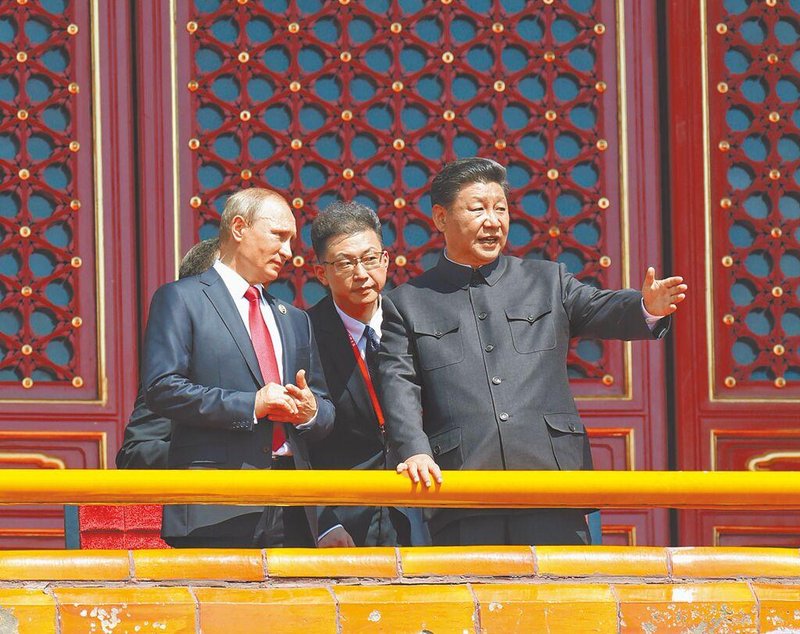
China’s 9/3 Military Parade: Power Projection or Sign of Strategic Instability?
Beijing is preparing its once-a-decade “9/3 military parade”, an event designed to project power and showcase the People’s Liberation Army (PLA) as a modern, confident force. Yet beneath the spectacle of advanced drones, hypersonic missiles, and precision marching, the parade reveals something far more troubling: a regime struggling with internal instability, pursuing nuclear and technological buildups that threaten U.S. interests, while becoming increasingly isolated on the world stage.
In the months leading up to the parade, a wave of purges within the PLA has unsettled China’s military leadership. Key figures — including former Defense Minister Li Shangfu, Rocket Force commander Li Yuchao, and even Central Military Commission vice chair He Weidong — have been removed or placed under investigation.
For Beijing, the parade’s carefully choreographed “unity” is intended to mask this chaos. But for U.S. analysts, it is a warning sign. A military that must constantly purge its top generals is not demonstrating confidence — it is revealing a crisis of trust.
This mirrors historical cases where authoritarian regimes sought to disguise weakness with spectacle. The Soviet Union, during the Cold War, frequently used Red Square parades to cover up purges and military failures. In today’s context, China’s 9/3 parade sends the same signal: instability dressed up as power.
The second critical message is military modernization. Beijing is expected to display new hypersonic weapons, stealth fighters like the J-35, and autonomous drone systems. Western think tanks estimate China could deploy over 1,000 nuclear warheads by 2030, a rapid expansion that challenges America’s extended deterrence commitments in Asia.
For Washington, this has direct strategic consequences. The Pentagon’s annual China Military Power Report warns that Beijing might consider first-use of nuclear weapons if a Taiwan conflict threatens regime survival. This echoes the logic of the Cuban Missile Crisis, when nuclear brinkmanship nearly triggered global catastrophe.
China’s emphasis on AI-driven “intelligentized warfare” — integrating drones, cyber-electronic warfare, and machine learning into battlefield operations — further complicates U.S. planning. Unlike traditional deterrence, these technologies blur the line between peace and conflict, making escalation harder to predict.
On the diplomatic front, the 9/3 parade underscores Beijing’s shrinking circle of global partners. A decade ago, South Korea’s president Park Geun-hye and other U.S. allies attended similar events. This year, not a single Western head of state will be present.
Instead, the only major figure expected to stand beside Xi Jinping is Russian President Vladimir Putin, currently under an International Criminal Court arrest warrant. This pairing highlights China’s drift into isolation, tethered to Moscow as its primary geopolitical partner while alienating the United States, Japan, and Europe.
For Washington, the image of Xi and Putin together is not simply symbolic. It reflects a tightening authoritarian axis, one that openly challenges the liberal order the U.S. has led since 1945.
Perhaps the most consequential backdrop is Taiwan. Unlike 2015, when Taiwanese politicians like Lien Chan attended the parade, Taipei has now banned all officials from participating. Taiwan’s government has also publicly rejected Beijing’s attempt to recast World War II history — emphasizing that the Republic of China, not the Chinese Communist Party, led the resistance against Japan.
For the U.S., this matters. Analysts predict the PLA could attempt military action against Taiwan by 2027, making this year’s parade potentially the last major rehearsal before such a conflict. Any clash across the Taiwan Strait would immediately implicate U.S. security commitments under the Taiwan Relations Act, as well as American bases in Guam, Okinawa, and the Philippines.
This scenario is not hypothetical. Just as the Cuban Missile Crisis forced Washington to confront a direct nuclear threat in its hemisphere, the Taiwan crisis could become the Cuban Missile Crisis of the 21st century — one where miscalculation leads to direct U.S.-China confrontation.
For American readers, China’s 9/3 parade is not a distant authoritarian ritual. It is a strategic warning.
Far from being a simple parade, this event signals strategic instability. Like the Cold War’s nuclear standoffs, Beijing’s show of force should remind Americans that the future of global security may hinge on how the United States responds to China’s militarized ambitions.